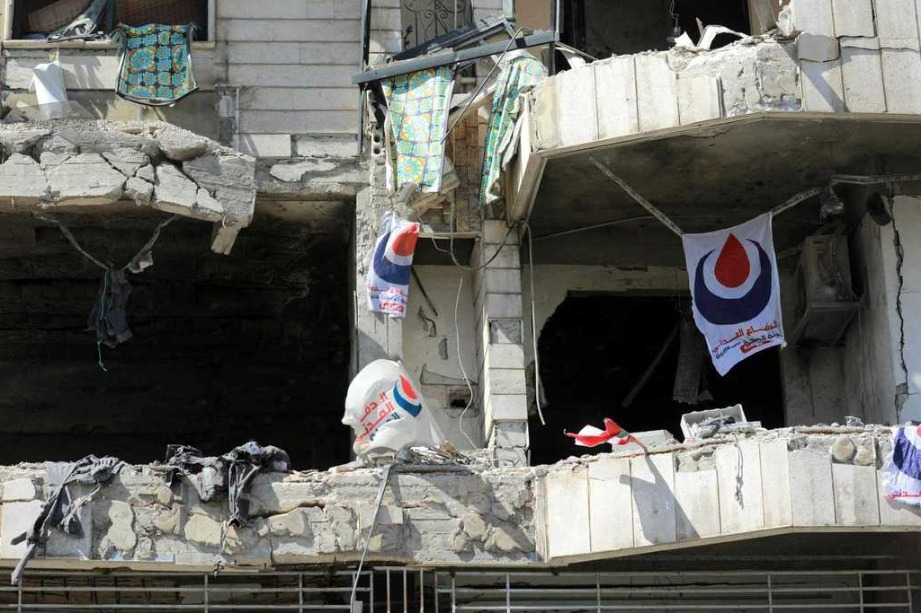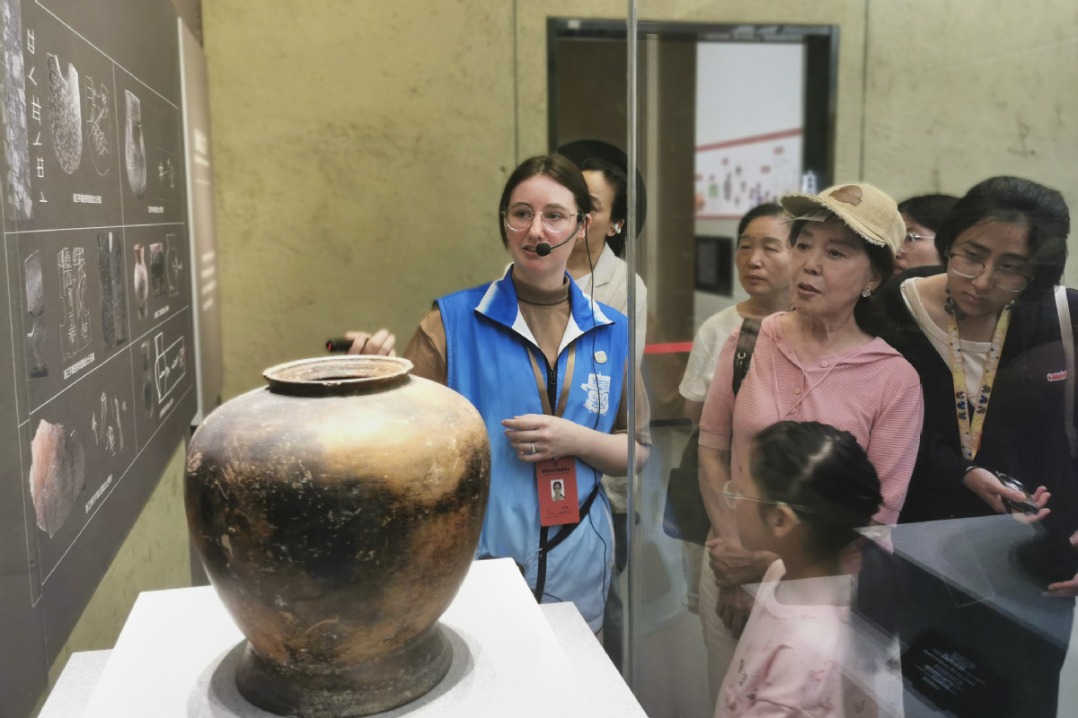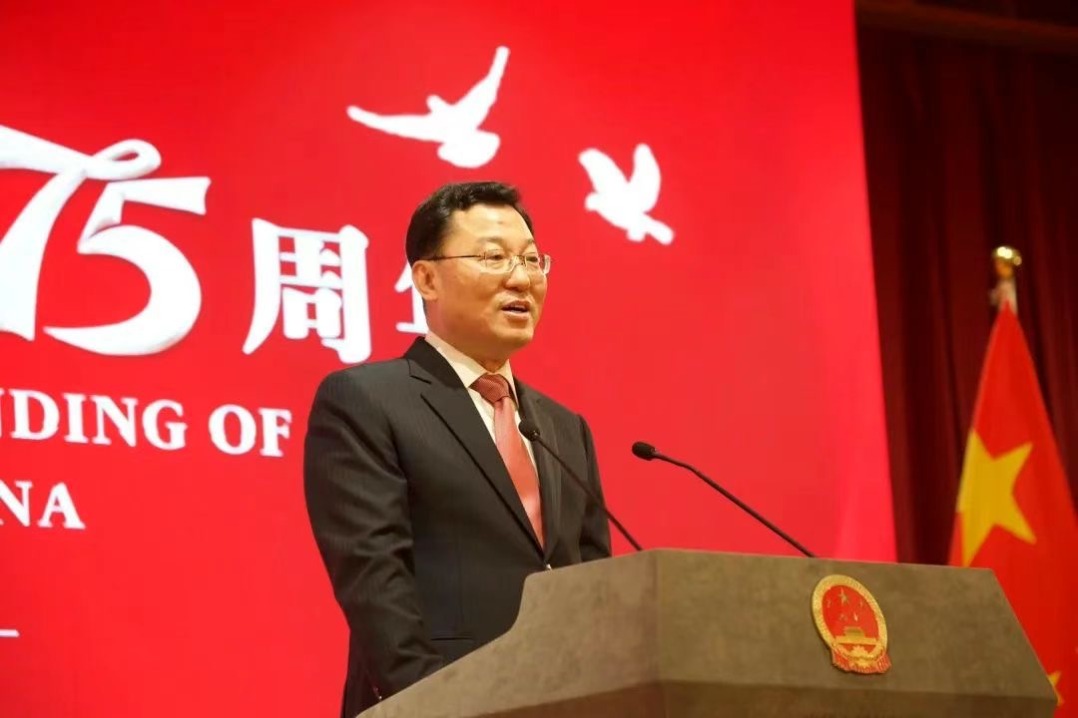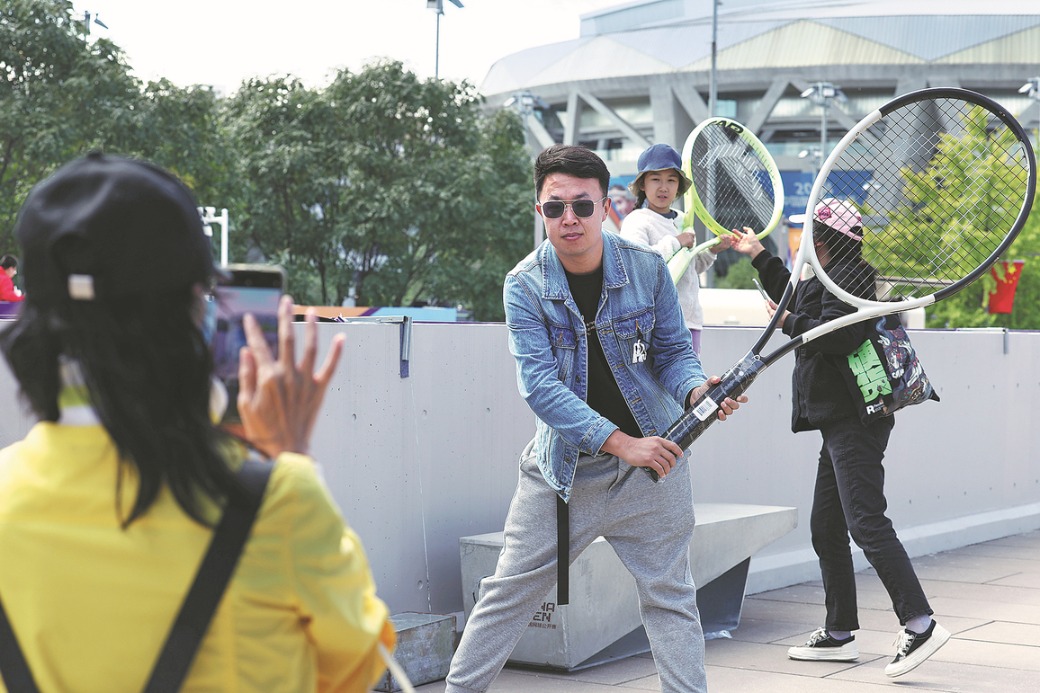China constructs new ties with Middle East
By Liu Linzhi | chinadaily.com.cn | Updated: 2023-09-19 15:20
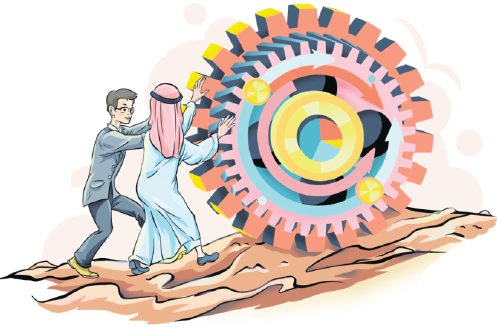
The stars arise in the East, illuminating China, while the new moon shines over West Asia, honoring the House of God. The friendship between China and the Arab nations has a long and enduring history.
Lu Ban, the progenitor of construction and architecture in China, bestowed an excellent genetic legacy on the Chinese people, making them leaders in global construction, known as "construction maniacs". There is no mountain they cannot traverse, no river they cannot cross, and no high-rise building they cannot construct.
China has participated in the infrastructure development in the UAE, one of the most developed nations in the Middle East in terms of infrastructure. The China State Construction Engineering Corporation Middle East has undertaken numerous housing, infrastructure, and landmark building projects, including the expansion of Dubai International Airport, the new terminal at Abu Dhabi International Airport, and the Dubai Metro, contributing significantly to the local rapid development and earning numerous awards from the UAE government, as well as industry recognition. The success of Chinese construction in the UAE market is attributed to its emphasis on promoting local employment, technological innovation, cooperation for mutual benefits, and active participation in local charitable activities. The UAE also hosts some of the most developed port constructions in the Middle East, with Chinese enterprises participating in several projects.
Since 2019, Chinese companies have been entering Qatar for infrastructure construction. Leveraging robust technical and economic strengths, in September 2021, the Chinese company initiated the construction of the Qatar Central Business District Infrastructure Project, led by China Harbour Engineering Company Ltd. The CCPP is the largest municipal infrastructure project in Qatar and the first of its kind taken up by China in the Middle East, encompassing a sea-crossing bridge, two underwater tunnels, two highways, and a railway, with a total investment of $9 billion. This project is expected to boost Qatar's economic development and enhance trade between China and Qatar.
As integral infrastructure for the World Cup, numerous stadiums in Qatar have seen the involvement of Chinese companies in their design and construction. Notably, the Lusail Stadium, the main venue for the Qatar World Cup, capable of hosting 80,000 spectators, is the largest stadium in Qatar and the first World Cup stadium project undertaken by a Chinese company as the general contractor, setting numerous industry records. The stadium has become a new landmark in Doha, even appearing on local currency.
The Qatar World Cup serves not only as a football festival but also as a stage for the competition of goods and services from various countries. Chinese creations and products have been dazzling in Qatar, demonstrating China's position in the global industrial chain. From stadium construction to utility guarantees, from peripheral events to ancillary services, Chinese manufacturing is contributing "Chinese power" to the Qatar World Cup.
China adheres to its fundamental policy of opening up, firmly upholding a win-win strategy of openness, and maintaining the correct direction of economic globalization. The country discourages isolative practices, encouraging cooperation instead. On numerous significant occasions, including the 5th China International Import Expo and the 17th G20 Leaders Summit, China has repeatedly emphasized the importance of openness.
Openness is a vital force for the advancement of human civilization and a necessary route for global prosperity and development. This essential concept finds resonance in Qatar—collaboration between the two countries yields win-win outcomes, with pervasive Chinese elements transforming the World Cup into a vital window for China to showcase its commitment to openness and its capabilities. China's involvement in the World Cup is broadening and deepening, with increasingly frequent exchanges of people, logistics, capital, and information. The "Chinese element" is not only present but also continuously improving and upgrading, reflecting a high level of enhanced openness and economic development. Through the World Cup, the international community witnesses China's resolve that "the open door will not close but open even wider," understanding the advantages of Chinese manufacturing and technology, and appreciating the truth that "the world cannot do without China, and China cannot do without the world."
In January 2016, China State Construction Engineering Corporation signed agreements with the Egyptian Ministry of Housing for the construction of projects like the central business district in Egypt's new capital. This business district will facilitate Egypt in better exploiting the Suez Canal Economic Zone and the Red Sea Economic Zone, boosting domestic economic growth. In September 2018, a $3.5 billion contract was signed for the second phase of the new capital central business district project. In 2021, a $19.2 billion contract was signed for the Al Alamein New City high-rise complex project, which is expected to become Egypt's "summer capital" post-completion.
Egypt started railway construction early on, but the system needs an upgrade due to outdated equipment and declining transport capacity. In August 2017, contracts were signed for Egypt's first electrified railway, the 10th of Ramadan City Suburban Railway Project, constructed by Chinese enterprises, including China Railway Construction Corporation. This light rail will alleviate traffic congestion in Cairo, facilitating the commute for about 5 million residents along the line from Cairo to the 10th of Ramadan City and the new administrative capital. In 2020, Chinese civil engineering groups and China Railway Construction Corporation won the bid for Egypt's high-speed rail project, the first of its kind in the country, connecting Ain Sokhna in Suez Province to Alamein in Matrouh Province with speeds up to 250 km/h, reducing the journey time between the Red Sea and the Mediterranean Sea to 3 hours. It is termed the second "Suez Canal". In recent years, port development in Egypt has also been progressing. In 2018, China Harbour Engineering Company collaborated with DP World to construct the second container terminal in Ain Sokhna, enhancing the port's cargo throughput capacity and improving regional logistics and transport conditions, furthering the China-Egypt infrastructure collaboration under the Belt and Road Initiative. In 2015, China and Iraq established a strategic partnership and signed a Belt and Road Initiative document. Under this framework, Chinese companies participated in various construction projects in Iraq, including oilfields, power stations, cement plants, and water treatment plants. These projects were highly acclaimed by the Iraqi government and its people, showcasing Chinese expertise in construction.
In the Arab world of West Asia and the Middle East, Chinese elements have become a shining calling card. Chinese companies are demonstrating their prowess with each construction project, earning both honor and respect. The stars arise from China, and the new moon illuminates the Middle East, symbolizing the everlasting friendship and escalating economic acceleration between China and the Arab nations. These relations, embodying two different civilizations and societal systems, bring equal welfare to their peoples.
Liu Linzhi is a research assistant of Institute of West-Asian and African Studies,Chinese Academy of Social Sciences.
The views don't necessarily reflect those of China Daily.
If you have a specific expertise, or would like to share your thought about our stories, then send us your writings at opinion@chinadaily.com.cn or comment@chinadaily.com.cn.





